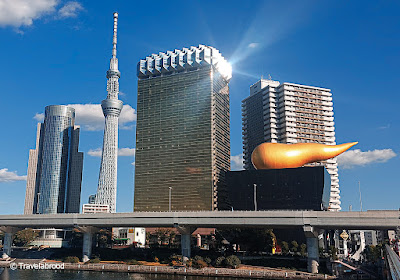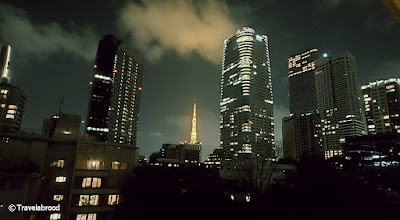DAY TRIPPING FROM TOKYO
Often a day trip from Tokyo can be as close as a 30-minute train ride. No matter how far you travel, beyond the modern and chic districts of Tokyo are some historically beautiful towns. If your schedule permits, exploring Greater Tokyo is highly recommended. During my recent visit, I thoroughly enjoyed exploring Kawagoe, Kichijoji, Kamakura and Enoshima.
KAWAGOE
Situated a brief 30-minute train ride away from central Tokyo, Kawagoe played a pivotal role as a primary goods provider to the city during its Edo era. Established back in 830, Kitain Temple, also known as Kawagoe Daishi, rose to prominence by the 17th century. Regrettably, some sections of the temple have suffered damage over time, yet remnants of the original Edo Castle endure to this day.
In ancient India, a person who had reached nirvana was called an arahant or better known in Japanese as a Rakan. Between 1782 and 1825, over 500 stone statues representing the disciples of Buddha were carved in stone and can be found at the Kitain Temple. No two statues are alike, each with a different facial expression.
 |
| 500 Statues of Rakan |
Candy Alley is a little shopping street lined with Edo style buildings, selling traditional Japanese sweets, gelato and cakes. After all the walking, sweet treats are welcome.
 |
| Candy Alley delights |
Kawagoe's Warehouse Districts main street, (Kurazukui Street) is a grand display of Edo Period (1603-1867) architecture. Bustling with tourists, most of the clay-walled warehouse-styled buildings house shops and restaurants.
There is a lot to see in Kawagoe, the main drawcard being its link to the past. We visited on a Sunday, so the streets were particularly busy. For further information, I found THIS website very helpful.
KICHIJOJI
Just outside central Tokyo, Kichijoji is one of Tokyo's most livable neighbourhoods and it's not hard to see why. Popular for shopping due to the main commercial district being close to the Kichijoji Station, it also boasts the beautiful Inokashira Park, Inokashira Park Zoo and Ghibli Museum.
 |
| Inokashira Park |
Exiting the station, I found my way to the Inokashira Park. The moment the lake came into view the hustle and bustle of Tokyo disappeared, leaving me to soak in the serenity. I visited during Autumn, so the paddle boats were locked up for the season; however, the colours were captivating and I took my time to explore.
Within the park is the Inokashira Park Zoo. The Aquatic Life Park is located on the water's edge; however, the main zoo gate is a mere 5-minute walk away. The zoo is small and has a petting area for small animals such as Guinea Pigs.
If you are a fan of animator and filmmaker Hayao Miyazaki, then you will want to visit the Ghibli Museum. If you are not familiar with his work, then I suggest you watch films such as: Spirited Away, Porco Rosso and Kiki's Delivery Service. They are fabulous! The museum is an easy 20-minute walk from Kichijoji Station and houses memorabilia from the Studio Ghibli films.
The three main shopping arcades of Kichijoji are: Sunroad, Daiyagai and Harmonica Yokocho (Alley). All centrally located around the station, there is a vast variety of shops and restaurants.
KAMAKURA & ENOSHIMA
Kamakura is a coastal town located about an hour and twenty-minutes from central Tokyo. To get there I took the metro to one of Tokyo's larger stations and then caught a JR train to Kamakura using my JR Pass. JR lines can be quite confusing as there are multiple trains using the same platforms/lines. Fortunately, I met a guy from New York who was also travelling to Kamakura, so he helped me out. Never be afraid to ask!
I figure Kamakura is sometimes referred to as the Kyoto of eastern Japan due to the abundance of temples. At the end of Komachi Street - where you can stop for coffee and frequent the trendy boutiques - is Kamakura's most important Shinto shrine, Tsurugaoka Hachimangu.
If you are keen to avoid the busy streets, there are several hiking trails around Kamakura. The Daibutsu Hiking Trail is a popular route for tourists visiting the Great Buddha and starts at Jochiji Temple in Kita-Kamakura. It usually takes around 60-90 minutes to complete.
Eager for a glimpse of the beach, I journeyed toward the ocean and followed the waterfront to Hase, continuing on to the Great Buddha situated within the Kotokuin Temple grounds. Originally sheltered within a grand temple hall, this 11.4-metre monument has stood exposed to the elements since the 15th century, following the destruction of the temple structures.
The Enoden electric train began in 1902 and rattles along the coast between Kamakura, Hase and Enoshima. You can buy tickets at the station or tap on/off with your credit card at the platform.
Enoshima Island is about a 20-minute walk from the station. With its abundance of attractions and activities, it merits a day trip all to itself. Getting quite late in the day, I hot footed it up to the Sea Candle, a 60 metre tall observation tower and lighthouse. On a clear day, you can see Mt Fuji in the distance.
 |
| Views from the observation tower |
Heading back to Kamakura and then onto Tokyo, I opted for the Shonan Monorail. Suspended from the tracks like an amusement park ride, the train weaves between buildings and houses, offering a unique perspective.


















